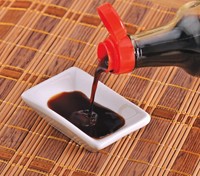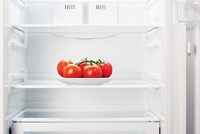Advertisement
Grab your lab coat. Let's get started
Welcome!
Welcome!
Create an account below to get 6 C&EN articles per month, receive newsletters and more - all free.
It seems this is your first time logging in online. Please enter the following information to continue.
As an ACS member you automatically get access to this site. All we need is few more details to create your reading experience.
Not you? Sign in with a different account.
Not you? Sign in with a different account.
ERROR 1
ERROR 1
ERROR 2
ERROR 2
ERROR 2
ERROR 2
ERROR 2
Password and Confirm password must match.
If you have an ACS member number, please enter it here so we can link this account to your membership. (optional)
ERROR 2
ACS values your privacy. By submitting your information, you are gaining access to C&EN and subscribing to our weekly newsletter. We use the information you provide to make your reading experience better, and we will never sell your data to third party members.
Food Science
Newscripts
Peering into food with X-rays and microscopes to create the perfect bite
by Prachi Patel
July 12, 2024
| A version of this story appeared in
Volume 102, Issue 21
CT scans to bake better biscuits

The difference between an American cookie and an English biscuit may seem like “tomayto tomahto” to the uninitiated, but the distinction is deeper than a name. Biscuits are meant for dunking in tea and, as Ted Lasso fans know, are good for melting a frosty boss. And though cookies are chewy, any self-respecting English biscuit is crisp and crumbly, firm and light, and breaks with a satisfying snap.
The snap comes from the biscuit’s airiness. That air-to-mass ratio depends on the precise mix of ingredients and how they interact under mixing and heat, creating connected air pockets amid the fat, flour, and sugar. “All these changes happen during the baking process, and it all relates to the eating experience,” says Jay Warnett, a mechanical systems engineer at the University of Warwick.
To uncover the secret behind a perfectly snappy biscuit, Warnett and his colleagues recently watched dough rise at the microscopic level. The team took X-ray computed tomography (CT) scans of biscuits as they baked. Their goal: to understand how recipe, baking time, and temperature affect a biscuit’s pore volume and thickness.
Confectionary giant Cadbury is using the delicious data to hone its culinary craft. The company runs simulations of its manufacturing processes and will feed Warnett’s data into the simulations. “Believe it or not, biscuits are big business,” he tells Newscripts.
Warnett typically studies industrial products such as wind turbine blades and race car parts. He feeds the objects into a CT scanner similar to the ones used for medical imaging. An X-ray source and detector take images of the objects from every angle as they rotate, and computer algorithms reconstruct a high-resolution image from the 360° scans.
To study biscuits, the team MacGyvered an “oven fashioned from an Amazon purchase, not a nice Bosch oven” that fits inside the CT scanner, he says. Cadbury sent them refrigerated biscuit dough that they popped into the oven and scanned once every 20 seconds during the 8-minute baking time.
One finding new to Cadbury: biscuits, much like cakes, rise during the baking process and then dip ever so slightly at the end. “That’s indicative of when the baking process has finished, and there’s no point keeping them in the oven longer,” Warnett says.
The particular biscuit they studied is a secret, he adds, but Cadbury will be sending them other varieties in the future. “They’ll all respond differently. A Digestive is very different from a Jammie Dodger.”
AFM: A food’s mouthfeel
As evident from snappy biscuits, juicy peaches, and crunchy chips, a food’s mouthfeel is key to its palatability. But the biophysics behind how food texture affects flavor needs more in-depth study. Melanie Köhler, Veronika Somoza, and colleagues at the Technical University of Munich (TUM) suggest using atomic force microscopy (AFM) to study mouthfeel on a cellular and molecular level (Nat. Food 2024, DOI: 10.1038/s43016-024-00958-3).

Food compounds trigger chemical receptor cells in taste buds. The TUM researchers are studying whether food molecules also activate mechanical receptors found in cell membranes. Molecules binding to mechanoreceptors could open ion channels, for instance, Köhler says, or physical parameters such as viscosity could activate or inhibit receptors.
The team exposes mechanoreceptor-containing cells to food compounds and scans the cells’ surfaces with an AFM’s nanoscopic tip “like an old-school record player,” she says. Measuring the tip’s deflection with a laser shows changes in the cell’s elasticity in response to the compounds.
These explorations should reveal how chemical and physical responses come together in our mouths to define flavor. It could also help the food industry develop pleasurable healthy foods. If low-fat, low-sugar, plant-based yogurt could give the same rich mouthfeel as full-fat, sugary dairy alternatives, “that would be amazing,” Somoza says.
Please send comments and suggestions to newscripts@acs.org.





Join the conversation
Contact the reporter
Submit a Letter to the Editor for publication
Engage with us on Twitter